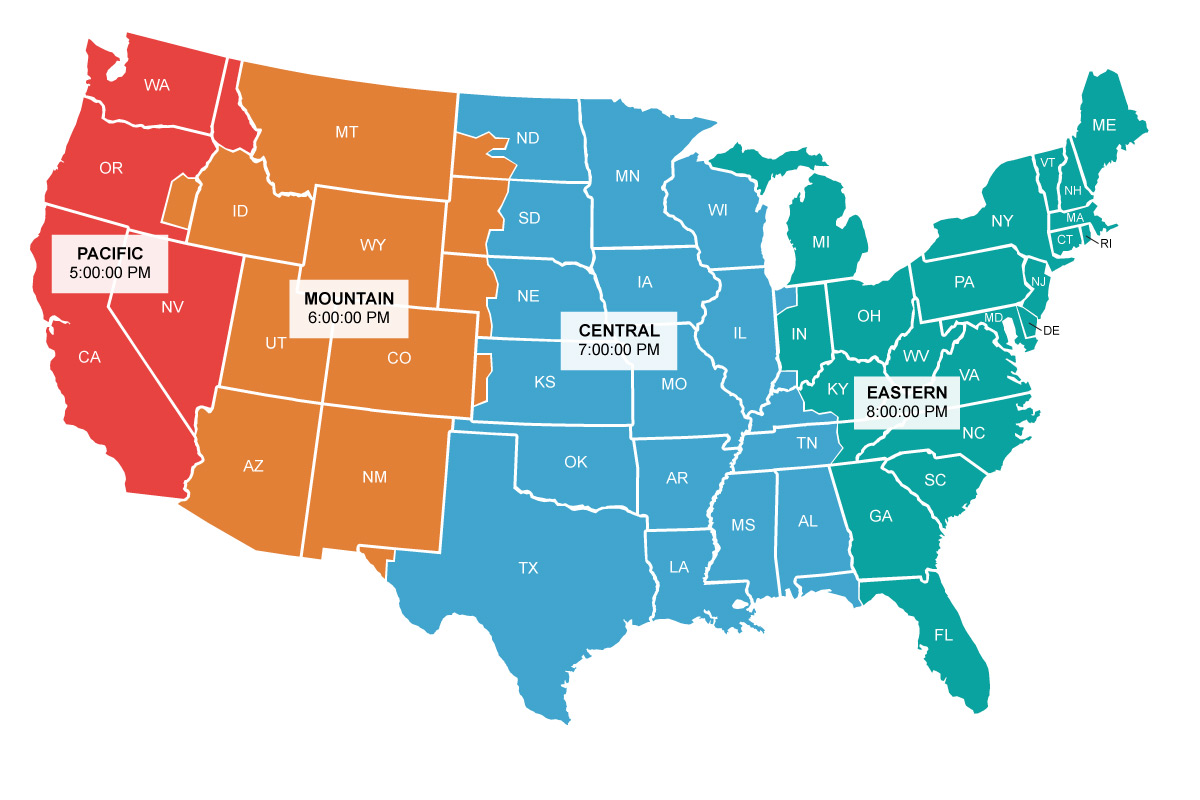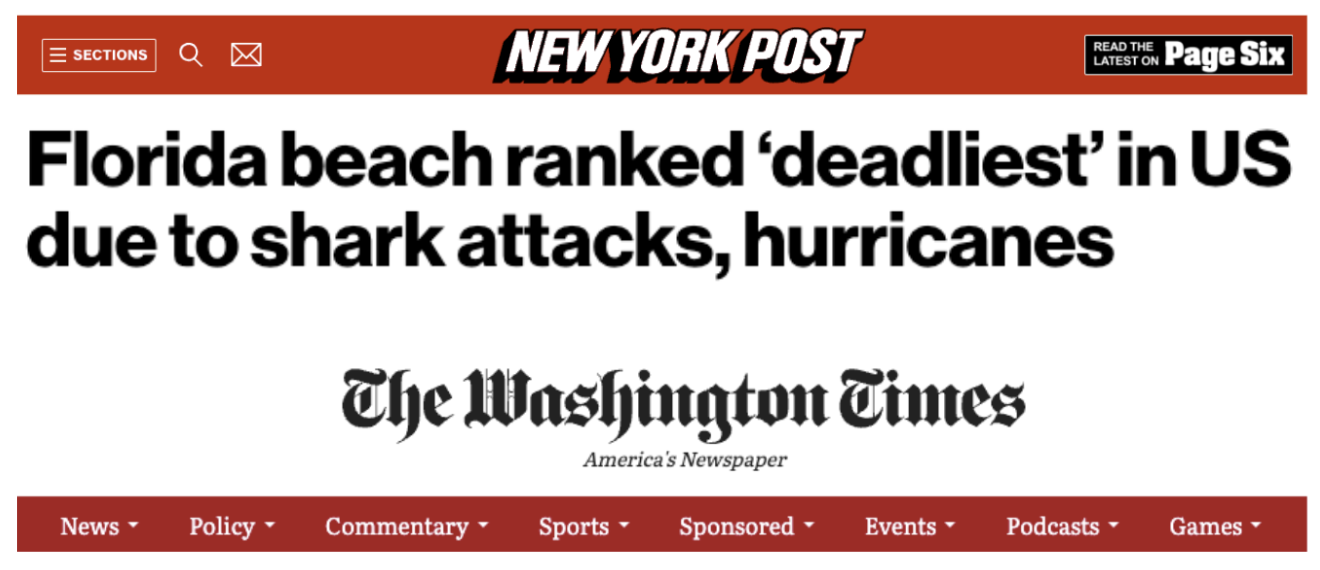
Earning coverage in British publications such as the Express, Evening Standard and Daily Mail is the bread and butter of UK-based digital PR agencies (the good ones, at least).
After working in the industry with our feet on the ground, we just get it.
As an agency, we have years of link-building and coverage-winning experience under our belts, meaning we know precisely what factors shape the ways in which the UK media landscape operates day-to-day. When it comes to getting the attention of journalists who are navigating an increasingly saturated market, we know our shit.
But, while securing coverage in our own press comes naturally to digital PRs in the UK, the same can’t always be said for launching successful campaigns across the pond.
Yes, when it comes to cracking the US media landscape, many digital PRs find themselves at dead ends, not knowing what strategies to follow, what tactics to employ and what direction to take. Even if they’re wildly confident at achieving this in the UK.
And in an increasingly globalised world, this just isn’t good enough anymore.
Brands in all niches are setting their sights on far broader horizons than ever before, wanting to enter new markets in new locations outside the UK. And for those of us working in PR, that means we need to get to grips with unfamiliar media landscapes and tailor strategies to align with new audiences.
Easier said than done, right?
I’ve spent the last few years leading a team of digital PR professionals who’ve worked to tackle this head-on. And together, we’ve pivoted our knowledge of the UK’s media and tested new approaches to link-building to drive results for our clients operating in and out of the US.
Here, I’m going to share some of the tips and tricks I’ve picked up along the way to help your brand make a name for itself stateside.
Keep reading to understand the main differences between these two media landscapes, proven content formats that work across the pond and practical tips to help your campaigns succeed.
What are the differences between the US and UK media landscapes?
Understanding how the US media landscape works is crucial, and there are a few key points to remember before launching your first campaign across the pond. And one key thing here is understanding how the US media landscape is different to the UK’s.
Data sources for US digital PR campaigns
You need to open your mind to finding new data sources.
Even though a data source might be the bee’s knees here in the UK, it could fall flat on its face in the USA, especially if audiences aren’t overly familiar with it or the data isn’t particularly relevant.
When producing a digital PR campaign, you want to use data sources that are relevant to the journalists you want to target, taking into consideration their niche and whether or not they’re more inclined to cover state-specific stories.
The US is home to a multitude of data sources which cover a wide range of industries. In my experience, it’s often possible to think about the types of data source you would use for a UK concept and look for equivalent sources in the US.
Let’s take a brand working in the healthcare sector as an example.
The NHS publishes huge amounts of data each year in the UK, but this isn’t going to be relevant for US audiences.
For a US-based healthcare campaign, we’d need to look at data from the Centers for Disease Control and Prevention (CDC).
Grammar and tone of voice for US campaigns
You want to ensure your pitch is personal and not robotic. Remember to use American British grammar and spelling, not British English, as this will appeal more to the US press.
It’s always recommended to pitch in your target market’s language, and in this case that means using American spelling and terminology.
This is what we call localisation.
Remember that some words we use in the UK mean something very different in the US.
Always localise your content.
When it comes to tone of voice, my advice is to follow the same common sense approach that you’d take with the UK press.
Think about the publication you’re pitching to (whether they’re serious or more laid-back, conservative or edgy), and adapt your tone accordingly.
If you want to do one better than just grammar and spelling, try researching regional idioms and dialects to make your pitches hyper-relevant to the journalists receiving them.
This can take a bit of trial and error, but as you become more experienced, you’ll start to get a feel for the best tone of voice to use and what attracts journalists the most.
Pick-up time is slower in the US than in the UK
While there’s no definitive explanation for this, one thing we have come to learn is that coverage pick-up in the US is slower than what it is here in the UK, so keep this in mind and don’t be disheartened at the lack of results.
And often, it’s much slower.
To increase open rates, make sure you personalise your pitches as much as humanly possible. Journalists and editors get hundreds of emails every single day, so you need to make sure yours piques their interest by standing out.
This isn’t just hearsay, either.
Ex-senior breaking news reporter at BuzzFeed, David Mack, explained how he received “roughly 300 emails a day” and rarely read more than the subject line.
Of the emails he did open, Mack noted that “What they all have in common is they were targeted at BuzzFeed and me specifically. The publicist knew who I was and what kind of stories I wrote, and was able to speak to this and why their pitch fit in line with that.”
A US audience wants to consume different content to a UK one
Research is key, and understanding what has and hasn’t worked in the US is the perfect building block to creating a successful US campaign.
Spend time looking at what competitors have done and carry out searches for ideas you have and see if there’s evidence to suggest it has the legs to succeed.
After creating US-focused digital PR campaigns for a number of years now, I’ve realised the importance of understanding the American audience and which topics will grab the attention of journalists and the general population alike.
A campaign that is backed by strong, credible, and relevant data is crucial to building the foundations for success, while a well-structured and targeted media list will help you reap the rewards and secure standout links for your client.
What types of content perform best in the US media?
If you think that because a concept has been successful in the UK, it’ll secure the same results when outreached to the press across the pond, think again!
Whilst some campaigns may work equally well with domestic and international audiences, this isn’t always the case.
And trust me when I say that we’ve learned this the hard way in the past.
To save you from learning this the hard way, here are some of the most effective types of content to use and things to consider when ideating for digital PR campaigns in the US.
- Stories with local angles that use regional data
- Timely campaigns with relevance to current issues or events
- Campaigns that can be adapted to suit state-specific news agendas
- Stories that talk to a specific niche and offer new insight
- Content that makes sense to the publication you’re pitching to.
Remember how large the US is and that life in two different states can be wildly different. Does someone in California care too much about being compared to someone in Kentucky? Maybe not… Know what makes your story relevant.
By creating regional and statewide hooks, you’re putting yourself in a position to significantly maximise the coverage your campaign lands.
Top tips for creating effective digital PR campaigns to earn coverage in the US
So, now that I’ve shared some insights on how the American media landscape differs from the UK’s and in what ways, we can look at some of the best tactics you can use to earn coverage in the US.
1. Research previous campaigns have been successful in the market
Before you start to conjure up any ideas, delve into the US media landscape and research what campaigns have done well and which haven’t.
Spend some time consuming the types of stories that publications write.
Look at your client’s competitors and see what PR work they have conducted, then create a list of your client’s target publications and see what topics they’re covering. Use these starting points as the foundations of your ideation process.
If you find a competitor campaign that sparks inspiration for a campaign you could create, carry out backlink analysis to see how successful it actually was. Specifically, look at which publications covered the research and keep this in mind as you work your way through the ideation process.
It’s also worth bearing in mind that if a similar campaign has been launched in the past 12 months, this could impact the results of your campaign as you could be pitching old news.
2. Source original, relevant data to back up your campaign’s angle
Credible data is the backbone of any successful digital PR campaign, so understanding what will resonate with journalists and their readers is mission-critical.
Some of the best and most credible US data sources include:
- Centres for Disease Control and Prevention (CDC) – Health/ lifestyle topics
- World Population Review – Health/ lifestyle topics
- OECD – Health/ lifestyle topics
- Statista – Health/ lifestyle topics
- Spotrac – Sports topics
- ESPN – Sports topics
- Fortune – Crypto/ Finance topics
- Crunchbase – Crypto/ Finance topics
As well as looking at similar data sources in the US, it’s also worth keeping in mind global resources such as World Population Review and OECD, as these can also provide you with regional as well as national data.
For a campaign to grab the attention of journalists, it’s essential to source data that is up to date and, ideally, covers the past 6-12 months but no longer. Using data which is years old will reduce your chances of coverage due to the campaign findings being potentially incorrect, which could cause backlash for you or your client.
Ideally, the only time you want to be using data which is more than 12 months old is if that is the most recent data set or you’re comparing historical data. An example of this could be if you’re comparing how the cost of medication in the US has increased over the past decade.
If you’re based in the UK, finding US-focused data sources can be tricky, but there are a few steps you can take to overcome any potential obstacles. Simple tips such as changing your location settings on Google can often present you with more exposure to US data, or if you’d like to look in more depth, then using a proxy or a VPN will be your best solution.
3. Maximise your outreach opportunities by creating a campaign that targets regional press as well as national
There are 50 states in the US, all of which are broken down by cities which have their own news networks covering stories related to the region, so use this to your advantage when creating a campaign.
At times, you can limit your outreach efforts by creating a national campaign, but sourcing data that allows you to generate state- and city-specific headlines is definitely going to boost the amount of coverage you secure and maximise your results.
Also, TV and radio networks will often cover stories related to the local area and some will often syndicate across numerous sites. We have seen great success after pitching to regional TV and radio networks over recent years, so this is something I’d highly recommend.
4. Build and finetune your media list
Compared to the UK, there are so many more opportunities to target regional press in the US, so finetuning a targeted media list with manual searches is the key to success.
Let’s break the process down into manageable chunks.
Based on my experience, the key components of a watertight US media list are as follows.
- Manual searches – Spend the bulk of your time carrying out manual searches to find contacts which are relevant to the angle you’re pitching.
- Publication titles – Create a list of news outlets in the state or city you’re focussing on, and make sure you get the email addresses of the newsdesk and any editors who are relevant to your pitch.
- TV and radio networks – As well as using Google to create a list of TV and radio networks in the state or city, create a filter on your chosen media list database as this will also prove to be beneficial and remember to include the newsdesk email address.
5. Pay attention to time zones to ensure you send pitches at the correct time of day
Just like when you’re pitching a story to a journalist in the UK, you need to take factors such as the time of day and the day of the week into consideration.
The critical thing to remember here is that the UK is in a different time zone to the US, so you’ll need to forward-plan to figure out the best time to press ‘send’ on your emails (using scheduling tools if required).
To complicate things further, it’s not as if the US has just one time zone! Because it’s so vast, different areas have different time zones (EST, CST, MST and PST), so you should split your media list according to these zones and work out the best time to schedule your outreach emails for each.
Ideally, you want your pitch to land in the journalist’s inbox between 8 AM and 9 AM their time so that the story is at the forefront of their minds as they plan their work for the day ahead.
If you don’t take time zones into consideration, you may miss out on securing the all-important coverage your campaign deserves, so remember the importance of planning your pitch times.

Here’s a handy table that you can use to figure out what time to send to the US (or schedule for) if you’re sending from the UK.
| Timezone | 8 AM Local | 9 AM Local |
|---|---|---|
| EST | Send at 1 PM GMT | Send at 2 PM GMT |
| CST | Send at 2 PM GMT | Send at 3 PM GMT |
| MST | Send at 3 PM GMT | Send at 4 PM GMT |
| PST | Send at 4 PM GMT | Send at 5 PM GMT |
6. Create a media calendar of key dates
Just like in the UK, it’s also important to remember key calendar dates, such as Black Friday, Halloween, Easter and Eid.
Crucially, though, you need to include notable dates that aren’t relevant for journalists here in the UK, such as Thanksgiving and the 4th of July.
It’s more than likely that journalists will be off during these days, so you’ll want to make sure your pitch arrives before or after the key dates. Also, use the likes of Thanksgiving to your advantage and see if you can hook your pitch to the occasion.
For example, experts predicted that in 2023, more than 55 million Americans would be hitting the roads for Thanksgiving, so this was an excellent opportunity to share driving safety tips for any motoring brands.
Tip: Create a calendar that outlines all of the key dates in the US, which will help you plan your outreach.
Results & final thoughts
Hopefully, this guide has helped you to gain a stronger understanding of the US media landscape and the steps you can take to create a Digital PR campaign that is going to land you both top-tier national and regional links across America.
These are the learnings my team and I have picked up over the years that have helped us launch countless successful campaigns for clients in a diverse range of industries, including sports, healthcare and travel.
One standout campaign even managed to secure over 230 pieces of coverage in the likes of USA Today, New York Post, The Washington Times and many more high DR publications.

If you have any more questions about the differences between the media landscapes of the UK and the US, or if you want to know more about how to create successful digital PR strategies that earn coverage in America, get in touch.
